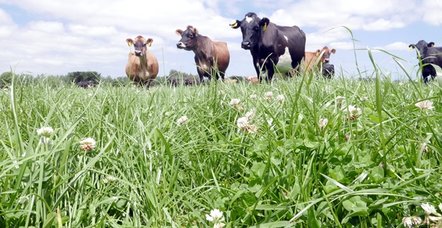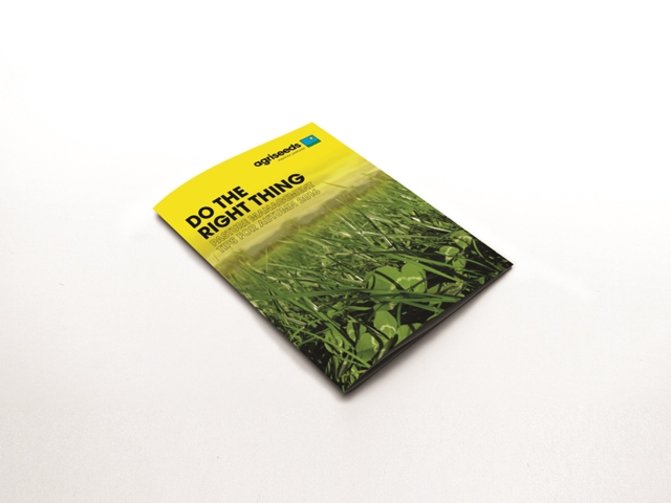Do the right thing to profit from pasture this autumn
Pasture has never been more important in creating strong, resilient farm systems than it is now. So Barenbrug has made it easier for farmers to get more out of their pastures this autumn with a new free booklet called ‘Do the Right Thing’.
It explains three key steps that will pave the way for a successful autumn on every dairy farm, for every budget.
 The first step is all about autumn grazing management. Barenbrug pasture systems manager Graham Kerr says this is the perfect place to start, because good pasture management through autumn helps farmers grow and utilise more dry matter/ha (DM/ha) straight away. It also sets the farm up well for the coming spring.
The first step is all about autumn grazing management. Barenbrug pasture systems manager Graham Kerr says this is the perfect place to start, because good pasture management through autumn helps farmers grow and utilise more dry matter/ha (DM/ha) straight away. It also sets the farm up well for the coming spring.
Graham says the importance of avoiding overgrazing, and giving pastures enough time to start growing properly again when it does rain after what the potential to be, in some areas, a dry summer, cannot be over-stated.
Meantime pasture utilisation, or the amount of DM eaten per ha, remains a key driver of profit on New Zealand dairy farms. To drive pasture utilisation in autumn, Graham encourages farmers to focus on leaving consistent post grazing residuals, day in and day out.
“This ensures high cow intakes and high pasture utilisation from the current grazing, and sets up pasture quality for the next grazing so the cycle will repeat itself in the next round.”
Later in autumn, it’s time for farmers to check whether paddocks need any late nitrogen and deal with any quality issues. “The end of lactation, and availability of dry cows, gives an opportunity to tidy up any poorly grazed paddocks or otherwise remedy any feed quality issues. This again helps set pastures up for a good spring.”
Also important at this time is looking after newly sown pastures as they become established.
The second step that will help farmers get the best out of their pastures is making good decisions around drying off, Graham says. “The right dry off strategy matches current cow condition, calving dates and pasture cover to help the farm be in right place at calving.
The third step is implementing the right pasture renewal programme, including any ‘grass to grass’ renewal that’s needed.
“Pasture renewal is an essential tool to maintain pasture yield and ME. Without it farm productivity and profitability deteriorate, affecting both farmers’ bottom line and the resilience of their business,” Graham says.
The economics of investment into a well implemented renewal programme, as outlined in the booklet, remain strong. A profitable result comes not only from increased DM growth, but also higher ME and higher pasture utilisation. Calculations show spending $1000 on new pasture, which can grow an extra 3 t DM/ha for five years, gives a return well in excess of 600%.
He says the key to successful renewal when times are tight is upgrading the right paddocks, using the right renewal technique that suits the farm and the soils, and using the right pasture genetics.
“Bargain seed is always available but a basic rule of life is that you get what you pay for, and seed is no exception. Saving $100/ha on cheap pasture seed can end up costing much more, through poor germination, high weed content, minimal endophyte or simply poor genetics.
“For ryegrass, DairyNZ’s Forage Value Index (FVI) is a valuable tool for choosing cultivars. The latest FVI rankings are now freely available online at www.dairynz.co.nz.”
To receive your own copy of ‘Do the Right Thing’, order online from http://www.Barenbrug.co.nz/request-form/request-form-do-the-right-thing.htm


